Psychedelic Properties of Peganum Harmala: Macrodose and Microdose Reports.
Michael Doty, MA, PhD(c), LMFTA, KAP
Peganum harmala has been used for millennia in traditional medicine and religious
rites. Recent phytopharmaceutical research has given credence to its traditional uses,
demonstrating a wide range of potential therapeutic uses, including its use as antidepressant and
anxiolytic agent. Entheogenic at high doses, P. harmala can create profound psychedelic
experiences with lasting positive effects that echo those seen in research on other psychedelics.
Anecdotal evidence from online forums suggests P. harmala may be able to provide results
similar to microdosing other psychedelics, though no research exists on this potential. This paper
presents the first evidence of P. harmala’s effects when used in a daily microdosing protocol.
Keywords—Peganum harmala, Syrian rue, macrodose, microdose, EEG, psychedelic,
entheogen, affect, burnout, extraction.
The following is a personal account of the author’s self-experimentation with Peganum
harmala. While P. harmala has been extensively studied as a traditional medicine, its inclusion
in psychedelic scientific literature is virtually nonexistent and preliminary data on its use as a
psychedelic in its own right is sparse. What does exist casts an uncertainty toward whether or not
it can provide a psychedelic experience on its own or if its value is limited to being used for its
ability to inhibit monoamine oxidase. The author determined that the best way to begin to fill the
gap in scientific literature was to document a series of bioassays using a range of doses and
simple extraction techniques. Please be aware that while the author attempts to be as objective as
possible, the following paper is a culmination of his individual subjective experiences with P.
harmala and the indicated results may not be generalizable. The author advises the reader to
keep this in mind and to be aware of the potential risks inherent in this form of research. The
author notes that while P. harmala and its alkaloids are legal and unscheduled where he resides,
this is not the case everywhere and the author encourages readers to respect their local laws and
regulations.
Peganum harmala, commonly known as Syrian rue, has a long history of use as a folk
medicine (Aziz, Khan, Adnan, & Izatullah, 2017), with over 30 uses in traditional medicine
(Niroumand, Farzaei, & Amin, 2015). Current research has demonstrated antibacterial (Bibi,
2017), antiviral (Moradi, Karimi, Rafieian-Kopaei, & Fotouhi, 2017), antifungal (Soliman et al.,
2017), and anticancer (Li et al., 2017) effects. Research suggests its primary phytochemical
constituents, a group of 5 β-carboline alkaloids collectively known as the harmala alkaloids, may
produce antidepressant effects through their action as reversible inhibitors of monoamine oxidase
(RIMA) and ability to increase brain-derived neurotrophic factor (BDNF; Fortunato et al., 2010).
The harmala alkaloids are also present in the ayahuasca vine, Banisteriopsis caapi, used in the
South American medicinal brew Ayahuasca, where the harmalas aid in the activation of
dimethyltryptamine found in other plants (McKenna, Towers, & Abbott, 1984). Some scholars
believe Syrian rue’s uses extended beyond traditional medicine and was combined with acacia
trees to create a sort of Ayahuasca analogue used for religious purposes (Shanon, 2008).
Today, while traditional uses for P. harmala continue, modern use in research and
entheogenic applications use a variety of extracts, from simple aqueous extracts to the use of
various solvents (Shulgin & Shulgin, 1997). Outside of pharmacological research and traditional
medicine, P. harmala’s use is primarily as a substitute for B. caapi in analogs of Ayahuasca
(Sayin, 2014). As its common psychoactive use is as an admixture with DMT containing plants
for Ayahuasca analogues, little documentation of full-dose experiences exists, as many user
reports focus found on www.erowid.org and www.dmt-nexus.me on its action as a RIMA and
higher doses are known to cause adverse effects (Shulgin & Shulgin, 1997). Anecdotal evidence
from experience reports retrieved from a search of the www.dmt-nexus.me forum suggests that
small, sub-perceptual doses of Syrian rue, also known as a microdose (Fadiman, 2011),
consumed as a tea or extract, can have positive effects on depression and anxiety.
Peganum harmala and other harmala alkaloid containing plants are unscheduled, legal,
and readily available in the United States and one, Passiflora incarnata (passion flower), is
commonly sold as a mood support supplement. Recent research suggests microdosing other
substances such as psilocybin and LSD can result in effects such as elevated mood and decreased
anxiety, along with increases factors associated with wellbeing (e.g., Fadiman & Korb, 2017). If
shown to be effective, P. harmala and other harmala-containing plants may provide legal
microdosing alternatives. This project aims to discover if P. harmala as an effect on affective
states and emotional well-being.
The aim of present study was twofold: First, to document a full-dose psychedelic
experience with P. harmala, and to address the action of microdoses of P. harmala extract on
affect and well-being. A secondary aim of this study is to identify potential neurological activity,
as assessed by encephalography (EEG). Because of its use as an Ayahuasca analog, potential
EEG results will be compared with existing literature on Ayahuasca’s effects on EEG activity
(Don et al., 1998; Riba et al., 2002).
Experimentation
The author conducted a series of four experiments using P. harmala seeds obtained from
a single source, https://www.shamansgarden.com/. During the course of experimentation, the
author abstained from all other psychoactive drugs with the exception of caffeine or where
otherwise noted. The first 3 experiments utilized timestamps in the following format: 24-hour
time (T + M) where T represents the time the dose was taken and M represents the elapsed time
in minutes.
Experiment 1: Whole Seed
Dose Preparation
Nine grams of seeds were chewed and swallowed along with water slightly acidified with
lime juice.
Study Design and Procedure
The study consisted of a single bioassay. Seeds were consumed after fasting for 18 hours.
The author recorded subjective effects during the experiment to the best of his ability. Additional
subjective effects were recorded the next morning.
Experience Report
12:53 (T=0): Finished swallowing 9g Syrian Rue seeds with water and lime juice.
13:20 (T+27): Pretty sure I am starting to feel something.
13:53 (T+60): Warm core; sweating even though its 72F and I am only wearing shorts.
Effects seem minimal, although there has been some time dilation.
14:08 (T+75): Took 0.57g phenethylamine PEA to test monoamine oxidase effect.
14:36 (T+101): I feel on the verge of an experience. Noticeable diuretic effect; urination
every 20-30 minutes.
14:53 (T+118): Pupils are slightly dilated. I feel something best described as something a
little more than stoned.
18:45 (T+352): Back to baseline, or pretty much so. Only noticeable effects were a
sensation of warmth, slight time dilation, dilated pupils, and the stoned feeling.
20:41 (T+468): While I thought I was back to baseline two hours ago, I feel very relaxed.
While concentrating on a documentary, I notice a slight pastel color overlay to my visual field,
particularly peripherally, that has fluid movement.
Experiment 2: Reduced Extract
Dose Preparation
Ten grams of seeds were boiled in a 60/40 solution of vinegar and distilled water for 30
minutes. Resultant liquid was poured off and set aside. Solids were boiled and strained two
additional times for 30 minutes each in distilled water. The aqueous extract was then reduced
under low heat until a tar-like residue weighing 2.35g remained.
Study Design and Procedure
The study consisted of a single bioassay. Extract was consumed approximately 3 hours
following a meal. The participant recorded subjective effects during the experiment to the best of
his ability. Additional subjective effects were recorded the next morning.
Experience Report
19:15 (T=0): 2.35g extract was rolled into small spheres and swallowed.
19:20 (T=5): Put on music and relaxed.
20:00 (T=45): Got up to use the restroom. Sensation of warmth throughout my body.
20:40 (T=85): Music ended; put on movie.
21:45 (T=150): Experiencing significant time dilation. I am halfway through the movie
but feel as though it should be over. Some haloing around light sources.
22:30 (T=195): Finished the movie and put on a documentary.
22:45 (T=210): I decided silence was better and turned off all media.
Following morning: After turning off media and lying in silence, I swam around my
thoughts for a while and enjoyed some simple linear close-eyed visuals (CEVs) before finally
drifting off. Sleep was restful.
Experiment 3: High-Dose Aqueous Extract
Dose Preparation
An aqueous extract was prepared by boiling 24g P. harmala seeds in distilled water
acidified with 6oz of lemon juice for 1.5 hours. Solids were filtered and the remaining liquid was
set aside. Solids were reboiled for 30 minutes in distilled water acidified with 2oz of lemon juice,
before being filtered again. Solids were boiled for a third time using only distilled water for an
additional 30 minutes. After filtering, the liquids were combined and reduced to a total volume
of 8oz.
Study Design and Procedure
The study consisted of a single bioassay. The extract was consumed approximately 5
hours after a small meal. The author recorded subjective effects during the experiment to the best
of his ability. Additional subjective effects were recorded the next morning.
Experience Report
16:56 (T=0): Quickly drank 4oz of P. harmala extract, equivalent to 12g seeds. The
immediate thought was that the taste was wretched; extremely bitter and acidic. A small amount
of tart cherry juice was used as a chaser.
17:19 (T+23): Clearly intoxicated. I can think clearly but have trouble maintaining focus.
As I am writing this, I feel a wave of extreme intensity.
17:25 (T+29): I had to lie down. Experiencing a sense of whole-body vibration, and a
sensation of spinning rapidly. Close-eyed visuals (CEV) of geometric forms. Writing is difficult.
At this point, it became extremely difficult to document the experience. The following
was written the next morning:
Around that time, my body was vibrating and I felt like I was spinning. It was like being
on a merry-go-round that was vibrating left and right, up and down. Any physical movement
resulted in almost immediate motion sickness. There was also a tone heard predominantly on the
right side that turned out to be pulses of sound that seemed to match the frequency of the
vibration. CEV geometry slowly transformed into a humanoid figure that encompassed all of
what I could see. Sometimes it was the vague outline of a face, other times it was a bust or
mostly full figure. From these views, the entity appeared bipedal entity with an elongated head.
When it would appear solid, I would ask questions, such as “who are you” or “what do you have
to tell me” but the only replies I received were smiles.
Then, near 17:45 (T+49), nausea set in. The impending purge felt greater than what I had
prepared for, so I made my way to the restroom. Movement was difficult to say the least. My
open-eyed visual field was dominated by neon outlines protruding 2-3 inches away from objects.
As I was raising the lid to the toilet, I vomited, covering the toilet and the wall behind it. I was
experiencing extreme time dilation and it seemed like it took forever to clean the mess, as it was
complicated by visual distortion, translucent and opaque tracers, and afterimages that appeared
glitch-like, as if perceptual framerates were distorted. Furthermore, the aforementioned neon
outlines were present around the interior of the toilet bowl, forming semicircles within the larger
circle created by the exterior of the toilet bowl. The semicircles rotated 45 degrees in one
direction before going back the other way.
When I finally returned to my room, I found it nearly impossible to regulate my body
temperature. Sitting up to take my shirt off almost made me vomit. As I settled back in to the
vibrations and spinning sensation, which was much less intense than earlier, I entered into a
period of internal hallucinations that were all encompassing and simultaneously indistinguishable
from reality while possessing a surreal dream-like hypnogogic quality. The prominent visions
were of a former psychotherapy client who had passed away a year earlier, a woman, a 4-5 year
old girl, and a lot of houses.
The houses happened first and most frequently, and the view was always from above.
Early on, the client appeared, sitting in a chair. In a telepathic manner, he told me he was gifting
me with a message that I wouldn’t be able to perceive until the time was right. He faded into
darkness and I was flying above houses before quickly circling down to a grassy field, where the
woman appeared. I embraced her and the scene changed to a young girl who was spinning
around in the sun. I got the impression they were my future partner and child.
After that encounter, I transitioned in and out of mostly all-encompassing fuzzy,
dreamlike hallucinations, but I could still clearly hear the music that was playing. For most of the
night, I couldn’t tell if I was sleeping. I awoke at 05:45am, wide awake and feeling fine other
than a sense of dehydration.
Experiment 4: Microdosing
Dose Preparation
P. harmala seeds were obtained from https://www.shamansgarden.com/. An aqueous
extract was prepared by simmering 20g P. harmala seeds in distilled water for 6 hours, allowing
it to sit for 40 hours, and simmering again for 2 hours. The resultant liquid was strained and
filtered, reduced to approximately 100ml, and filtered again. Distilled water was added to bring
the volume to 200ml, creating a concentration of approximately 1g/10ml. This concentration
provides an equivalent dose of 0.5g/5ml, approximately 1/10 the reported MAOI dose and 1/28
the mean of the range reported for psychoactive effects described by Ott and Shulgin (Erowid,
2020), failing into the suggested range of a microdose (Fadiman, 2011). The extract was stored
in the refrigerator and mixed well before measuring daily doses.
Study Design and Procedure
The study consisted of 18 consecutive days of data collection, the first 6 being control
days and the remaining 12 as microdose days. On all 18 days, approximately 10 minutes of EEG
resting state data was collected. EEG data collection occurred one hour after waking. The
participant was instructed to recline on a couch and relax while listening to a piece of music,
alternating between Shpongle's "How the Jellyfish Jumped up the Mountain" (Posford &
Rothfield, 2013) and "Ineffable Mysteries” (Posford & Rothfield, 2009). Two pieces were
chosen to provide variety and these were used because of their identical length, 10 minutes 24
seconds, and similar tempo. Survey data was collected via online form nightly before bed for all
18 study days.
Beginning on day 7 and continuing daily for the remainder of the study, doses of
0.5g/5ml P. harmala extract were administered immediately upon awakening. Extract was
removed from refrigeration, mixed well, measured with an oral syringe, and consumed directly
via injection into the back of the mouth.
Measurements
EEG data was collected using Muse headset, recording through 4 electrodes in locations
a_TP10, TP9, AF7, and Af8, and recorded with the MuseMonitor app. Data collection occurred
approximately +60 min from drug administration. Data was imported into EEGLAB, channel
means were removed and data was filtered through the Basic FIR filter to a range of 1 – 50 Hz.
Artifacts were processed visually. Statistical analysis of EEG recordings was performed using
EEGLAB’s STUDY function. An alpha level of 5%, was used and all P values lower than 0.05
are clearly distinguished in spectral plots. Power spectra for all channels were analyzed for
significance.
After preliminary analyses showed remaining artifacts, datasets underwent further visual
processing. Following a second analysis of power spectra, datasets from sessions 1, 2, and 3
were rejected due to large amounts of noise, presumably from a poorly fitting headset.
The author completed an online questionnaire nightly via the Google Forms platform
(www.google.com/forms) and took approximately 3 minutes to complete. The questionnaire
consisted of 5 items addressing burnout and The Positive and Negative Affect Schedule
(PANAS-X), a 60-item survey (Watson & Clark, 1994). The PANAS-X contains 13 subscales:
Negative Affect, Positive Affect, Fear, Hostility, Guilt, Sadness, Joviality, Self-Assurance,
Attentiveness, Shyness, Fatigue, Serenity, and Surprise. Survey data was analyzed in Statistica
using multivariate analysis of variance (MANOVA) with repeated measures, with treatment
groups (control, microdose) as factors, and linear regression. Differences were considered
statistically significant for P<0.05.
Results
EEG Recordings. Between-session analyses shows significant differences in control and
microdose EEG recordings on the between 42-44 Hz on the TP9 channel (Fig. 1) and at 11 Hz on
the AF7 channel (Fig. 2).
Subjective Ratings
With the exception of three PANAS-X subscales, Positive Affect,
Attentiveness, and Surprise, and two burnout items, physical exhaustion and somatic distress, all
between-group differences (Table 1) were significant, with the greatest effect seen as reductions
in Negative Affect and Hostility. Within-group analyses (Table 2) and linear regression (Fig. 3,
Table 2) show and show significant changes over the course of the study. No significant
differences were found when preforming an ANOVA with repeated measures using music choice
as a factor.
Microdosing Discussion
Results indicate that daily administration of subperceptual doses of P. harmala produce
significant changes in affect and neurological activity. While a significant difference was not
present between the control and microdose groups in the Positive Affect subscale, significant
reductions in negative emotion subscales and increases in positive emotion subscales lend
validity to the overall subjective experience of an overall better mood and reduction in symptoms
of stress and anxiety. This supports animal research showing that harmala alkaloids exhibit
antidepressant-like effects (Fortunato et al., 2010) and is in step with observed effects in a
number of microdosing studies (e.g., Fadiman & Korb, 2017, Passe, 2019; Polito & Stevenson,
2019).
EEG research on the effects of full doses of Ayahuasca, also rich in harmala alkaloids, is
limited and it is likely that the presence of DMT in Ayahuasca has an effect on EEG results.
However, the presence of harmala alkaloids allows for some comparison. Early research showed
significance increases in power in the 32-44 Hz frequency band, as well as nonsignificant
increase in beta band and decreases in both alpha and theta bands (Don et al., 1998). While the
gamma band was not investigated in subsequent research, showed significant effects across all
frequency bands, although the researchers did not find significance at the alpha-2 sub-band
(10.5-13 Hz; Riba et al., 2002).
Interestingly, the present study found significant effects between 11-12 Hz, a novel
finding in regards to Ayahuasca research, while also serving to confirm previous findings
relating to gamma band activity (Don et al., 1998).
The results of the survey data, indicating a cumulative effect across a number of affective
qualities, match the author’s qualitative reflection on the experience. While subjectivity
suggested an improvement in positive affect, this is not indicated by the results. The subjective
perception of improved positive affect may in part be due to a reduction in negative affect and
other negatively valenced measures. Additionally, the author experienced fewer intrusive
thoughts related to PTSD. The overall qualitative impression is that while stressors were still
present and in awareness, there was a sense of not feeling as bothered by stressors.
This study has several limitations. As a single-participant study, control for confounding
variables is lacking and it is impossible to rule out other potential factors contributing to the
effect. One such confounding variable may be the simple act of relaxing for 10 minutes per day.
The extraction technique also presents limitations. Like all plants, variance in phytochemical
concentration is expected and without a refined extraction of alkaloids, exact dosing is
impossible. As an aqueous extract, brewing time, temperature, and source material all play a role
in the variability of alkaloid content. Finally, this researcher was previously inexperienced with
EEG data collection and processing. Inexperience in fitting the EEG hardware may be a factor in
only finding significant differences in left-hemisphere channels. An additional consideration that
may be a limitation is questionnaire design; by positioning burnout questions before the PANAS-
X, there could be a priming effect.
Further research is necessary to establish significant results that are able to be generalized
to the population at large. By using a larger sample size and standardized extracts, statistical
power and inference of results would be of greater significance. Accessibility of P. harmala, its
low price (approximately $0.03 per 0.5g dose) and ease of extraction create an opportunity for
much larger participant pools, although collecting EEG data still creates constraints. A large-
scale survey study combined with a smaller scale EEG study could yield significant results that
verify P. harmala’s efficacy for microdosing.
The next step in this line of inquiry is to perform a small-scale pilot study to expand the
data pool in a similar way to other microdosing studies, with participants self-reporting data.
Extending data collection after the cessation of microdosing can be used to determine potential
prolonged effects. This phase could focus on survey data, making EEG data collection optional
or excluded from the phase. Following this the abovementioned large-scale studies could
proceed.
This study helps to confirm reports of P. harmala’s effects on decreasing negative affect
when used in a daily microdosing protocol, providing evidence that it may prove to be a low
cost, legal alternative for other psychedelic medicines.
Conclusion
This series of experiments serves to further establish the pscyhoactivity of P. harmala, as
well as its potential as a legal and cost-effective substance for microdosing protocols. Observable
effects varied, however the most consistently noticeable effects across doses, with the exception
of microdoses, were a sense of warmth and time dilation. Higher doses led to CEVs. At the
highest studied dose, effects also included open-eyed visuals (OEVs), auditory hallucinations, a
sense of somatic vibration, vertigo, nausea, and vomiting. Observed content at the highest dose
included an apparent nonhuman entity encounter, whose presence seemed to guide the entire
experience by showing the author a number of different scenarios that seemed unrelated in the
moment. After a long period of integration, the author has determined that much of the content
shown related to a sense of identity, interconnectedness, and community.
The apparent entity encounter had a significant quality, as it was the first time the author
had an experience of that nature. Of note, the author felt as though he was confronted with the
what felt to be same entity during an ayahuasca experience three months later. During both
experiences, the author felt as though the entity had imparted wisdom and guidance. Entity
encounters are common phenomena, particularly with dimethyltryptamine (DMT) and ayahuasca
(Luke, 2011; Meyer, 1994; Strassman, Wojtowicz, Luna, & Frecska, 2008). Meyer’s (n.d.)
review of 340 DMT experience reports showed that 226 reports, or 66.47%, contained
descriptions of entities. A pharmacological of DMT study conducted at the University of New
Mexico discovered that approximately half of the trials resulted in entity experiences. Although
beyond the scope of this paper, researching psychedelic entity encounters could offer valuable
insight into the nature of consciousness and warrants further investigation.
During the course of experimentation, no adverse effects were noticed aside from nausea
and vomiting at the highest studied dose. Those effects subsided during the peak effects and the
author experienced no negative residual effects the following day. While further research is
necessary to address limitations, cofounding variables, and biases, these experiments suggest that
P. harmala can reliably induce a psychedelic state similar to classic serotonergic psychedelics
and shows potential antidepressant and anxiolytic effects when microdosed.
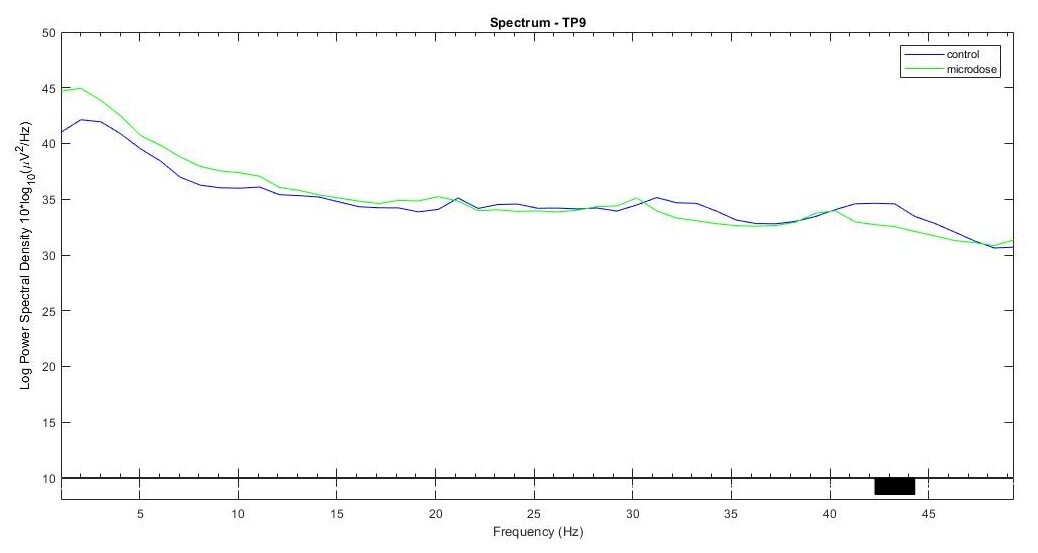
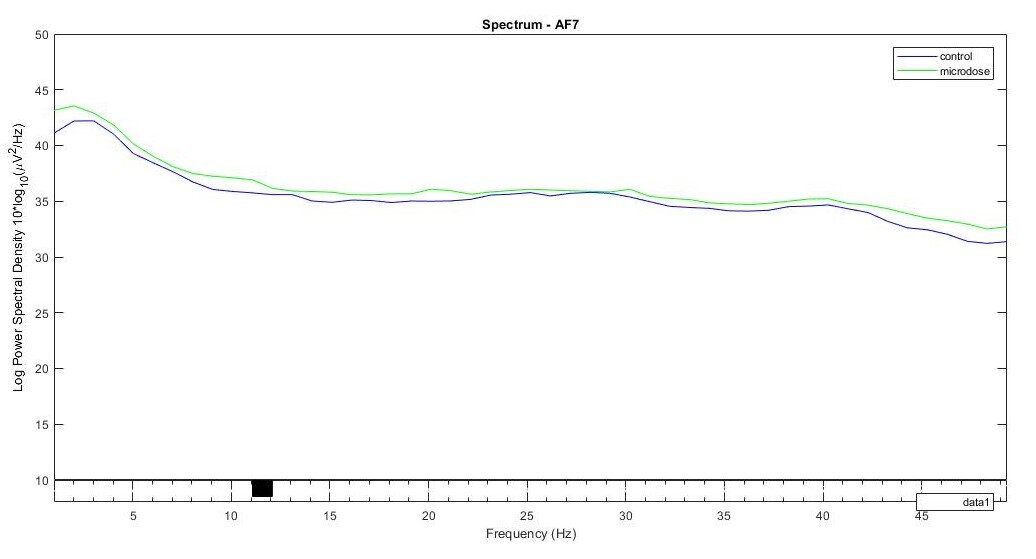
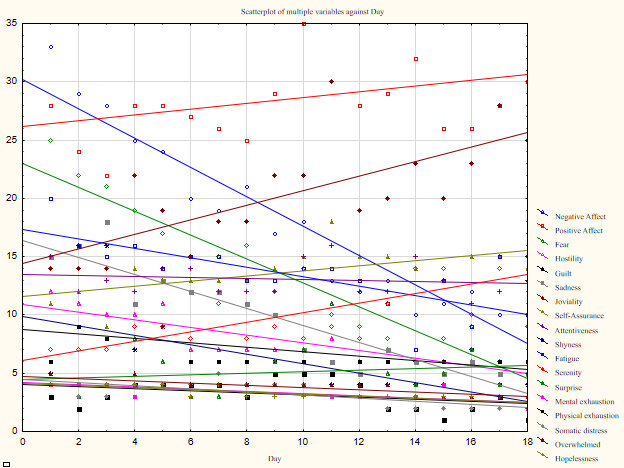
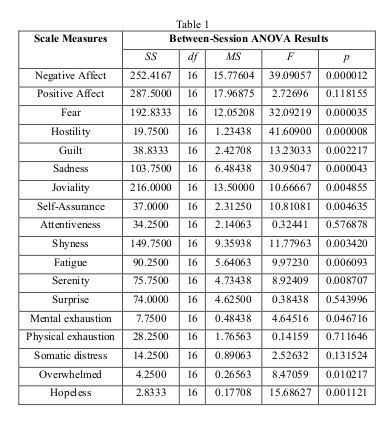
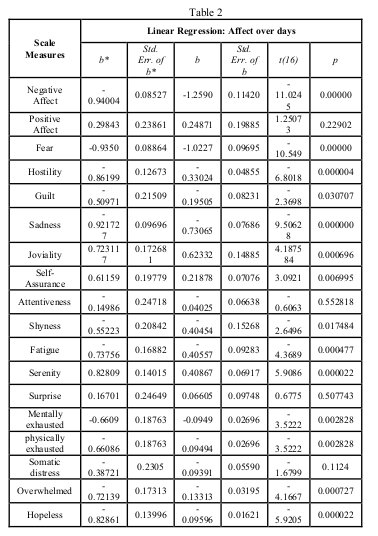
References
Aziz, M. A., Khan, A. H., Adnan, M., & Izatullah, I. (2017). Traditional uses of medicinal plants
reported by the indigenous communities and local herbal practitioners of Bajaur Agency,
Federally Administrated Tribal Areas, Pakistan. Journal of Ethnopharmacology, 198,
268-281. doi:https://dx.doi.org/10.1016/j.jep.2017.01.024, [Online]. Available:
http://www.sciencedirect.com/science/article/pii/S0378874117301976?via%3Dihub
Bibi, F. (2017). Diversity of antagonistic bacteria isolated from medicinal plant Peganum
harmala L. Saudi Journal of Biological Sciences, 24(6), 1288-1293.
doi:https://dx.doi.org/10.1016/j.sjbs.2015.09.021, [Online]. Available:
http://www.sciencedirect.com/science/article/pii/S1319562X15002168?via%3Dihub
Don, N., McDonough, B., Moura, G., Warren, C., Kawanishi, K., Tomita, H., Tachibana, Y.,
Böhlke, M., & Farnsworth, N. (1998). Effects of Ayahuasca on the human EEG.
Phytomedicine, 5(2), 87-96. doi:https://doi.org/10.1016/S0944-7113(98)80003-2,
[Online]. Available:
https://www.sciencedirect.com/science/article/pii/S0944711398800032
Erowid. (2020). Syrian Rue Dosage. Erowid.org. [Online]. Available:
https://erowid.org/plants/syrian_rue/syrian_rue_dose.shtml
Fadiman, J. (2011). The psychedelic explorer's guide. Rochester, Vt.: Park Street Press.
Fadiman, J., & Korb, S. (2017) Microdosing: The phenomenon, research results, and startling
surprises. Psychedelic Science 2017 conference, April 21, 2017, [Online]. Available:
19
http://psychedelicscience.org/conference/interdisciplinary/microdosing-the-
phenomenon,-research-results,-and-startling-surprises
Fortunato, J., Réus, G., Kirsch, T., Stringari, R., Fries, G., Kapczinski, F., Hallak, J. E., Zuardi,
A. W., Crippa, J. A., & Quevedo, J. (2010). Chronic administration of harmine elicits
antidepressant-like effects and increases BDNF levels in rat hippocampus. Journal of
Neural Transmission, 117(10), 1131-1137. doi:https://dx.doi.org/10.1007/s00702-010-
0451-2, [Online]. Available: https://link.springer.com/article/10.1007%2Fs00702-010-
0451-2
Li, C., Wang, Y., Wang, C., Yi, X., Li, M., & He, X. (2017). Anticancer activities of harmine by
inducing a pro-death autophagy and apoptosis in human gastric cancer cells.
Phytomedicine, 28, 10-18. doi:https://dx.doi.org/10.1016/j.phymed.2017.02.008,
[Online]. Available:
http://www.sciencedirect.com/science/article/pii/S0944711317300399?via%3Dihub
Luke, D. (2011). Discarnate entities and dimethyltryptamine (DMT): Psychopharmacology,
phenomenology, and ontology. Journal of the Society for Psychical Research, 75.1(902),
26-42.
McKenna, D., Towers, G., & Abbott, F. (1984). Monoamine oxidase inhibitors in South
American hallucinogenic plants: Tryptamine and β-carboline constituents of Ayahuasca.
Journal of Ethnopharmacology, 10(2), 195-223. doi:https://dx.doi.org/10.1016/0378-
8741(84)90003-5, [Online]. Available:
https://www.sciencedirect.com/science/article/pii/0378874184900035
20
Meyer, P. (n.d.). 340 DMT trip reports attesting to contact with apparently independently-
existing intelligent entities within what seems to be an alternate reality. Retrieved from
http://www.serendipity.li/dmt/340_dmt_trip_reports.htm
Meyer, P. (1994). Apparent communication with discarnate entities induced by
dimethyltryptamine (DMT). In Lyttle, T. Psychedelics, 161-203. New York: Barricade
Books.
Moradi, M., Karimi, A., Rafieian-Kopaei, M., & Fotouhi, F. (2017). In vitro antiviral effects of
Peganum harmala seed extract and its total alkaloids against influenza virus. Microbial
Pathogenesis, 110, 42-49. doi:https://dx.doi.org/10.1016/j.micpath.2017.06.014,
[Online]. Available:
http://www.sciencedirect.com/science/article/pii/S0882401017305843?via%3Dihub
Niroumand, M. C., Farzaei, M. H., & Amin, G. (2015). Medicinal properties of Peganum
harmala L. in traditional Iranian medicine and modern phytotherapy: a review. Journal of
Traditional Chinese Medicine, 35(1), 104-109. doi:https://dx.doi.org/10.1016/S0254-
6272(15)30016-9, [Online]. Available:
https://www.sciencedirect.com/science/article/pii/S0254627215300169
Passe, T., (2019). The science of microdosing psychedelics. Psychedelic Press.
Polito, V., & Stevenson, R. (2018) A systematic study of microdosing psychedelics. Preprint
retrieved from https://psyarxiv.com/cw9qs/ https://dx.doi.org/10.31234/osf.io/cw9qs
Posford, S., & Rothfield, R. (2009). Ineffable mysteries [Recorded by Shpongle]. On Ineffable
mysteries from Shpongleland [CD], London, England: Twisted Records, 2009.
21
Posford, S., & Rothfield, R. (2013). How the jellyfish jumped up the mountain [Recorded by
Shpongle]. On Museum of Consciousness [CD], London, England: Twisted Records.
Riba, J., Anderer, P., Morte, A., Urbano, G., Jané, F., Saletu, B., & Barbanoj, M. (2002).
Topographic pharmaco-EEG mapping of the effects of the South American psychoactive
beverage ayahuasca in healthy volunteers. British Journal of Clinical Pharmacology,
53(6), 613-628. doi:https://dx.doi.org/10.1046/j.1365-2125.2002.01609.x, [Online].
Available:
https://www.iceers.org/docs/science/ayahuasca/Riba%20et%20al_2002_Topograph_phar
maco-EEG_Ayahuasca.pdf
Sayin, H. (2014). The consumption of psychoactive plants in ancient global and Anatolian
cultures during religious rituals: The roots of the eruption of mythological figures and
common symbols in religions and myths. NeuroQuantology, 12(2), 276-296.
doi:https://dx.doi.org/10.14704/nq.2014.12.2.753, [Online]. Available:
https://www.neuroquantology.com/index.php/journal/article/view/753
Shanon, B. (2008). Biblical entheogens: A speculative hypothesis. Time and Mind, 1(1), 51-74.
doi:https://dx.doi.org/10.2752/175169608783489116, [Online]. Available:
http://www.tandfonline.com/doi/abs/10.2752/175169608783489116
Shulgin, A. T., & Shulgin. L. A. (1997). Harmaline. In Tihkal: The continuation. Berkeley:
Transform Press. Available: https://erowid.org/library/books_online/tihkal/tihkal13.shtml
Soliman, S., Alnajdy, D., El-Keblawy, A. Mosa, K., Khoder, G., & Noreddin, A. (2017). Plants'
natural products as alternative promising anti-candida drugs. Pharmacognosy Review,
22
11(22), 104-122. doi:https://dx.doi.org/10.4103/phrev.phrev_8_17, [Online]. Available:
http://digitalcommons.chapman.edu/pharmacy_articles/498/
St John, G. (2015). Mystery school in hyperspace: A cultural history of DMT. Berkeley, CA:
Evolver Editions.
Strassman, R. (2001). DMT: The spirit molecule: A doctor’s revolutionary research into the
biology of near-death and mystical experiences. Rochester, VT: Park Street Press.
Strassman, R., Wojtowicz, S., Luna, L. E., & Frecska, E. (2008). Inner paths to outer space:
Journeys to alien worlds through psychedelics and other spiritual technologies.
Rochester, VT: Park Street Press.
Watson, D., & Clark, L. A. (1994). The PANAS-X: Manual for the Positive and Negative Affect
Schedule – Expanded Form, The University of Iowa, 1994, [Online]. Available:
http://www2.psychology.uiowa.edu/Faculty/Clark/PANAS-X.pdf
